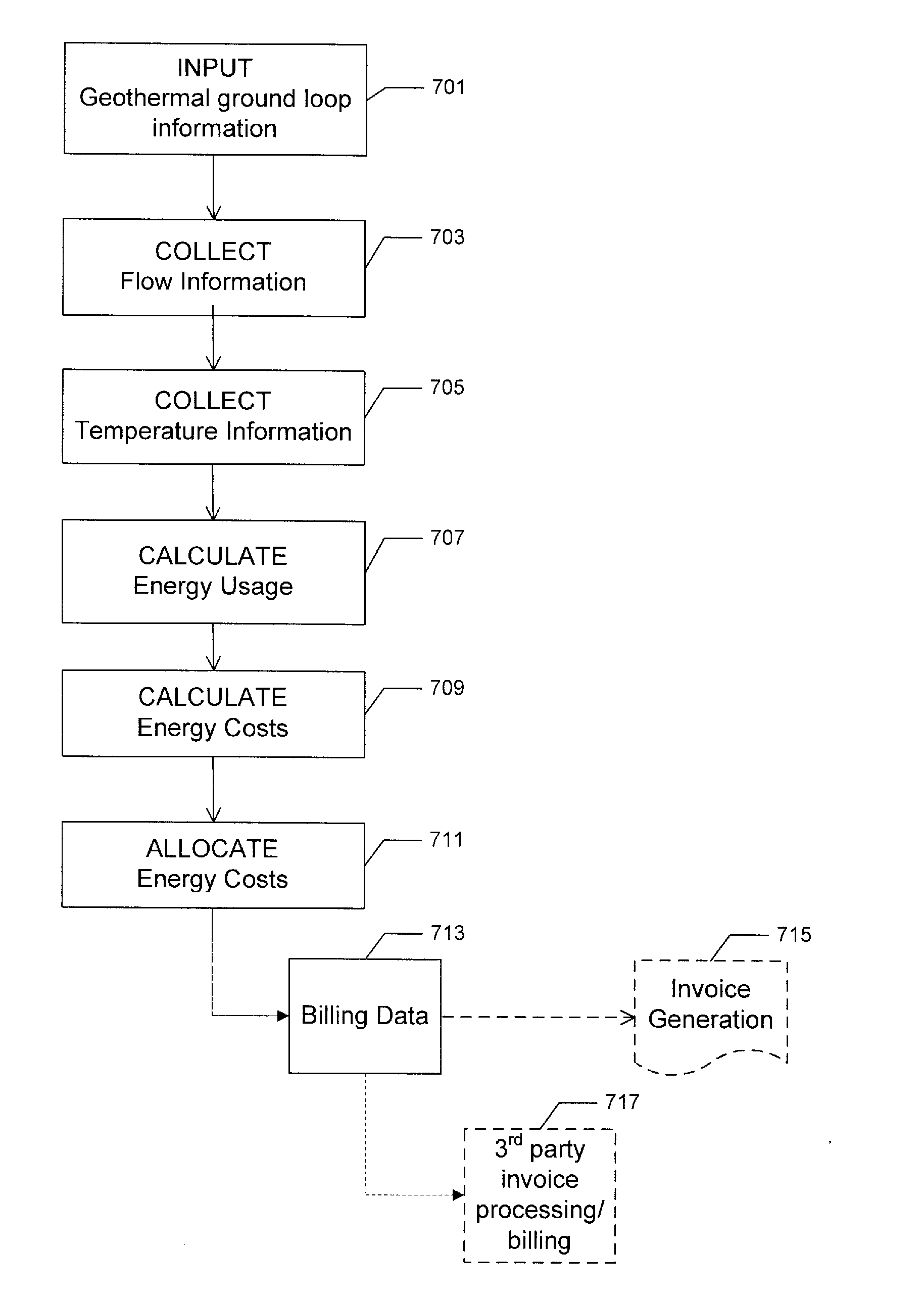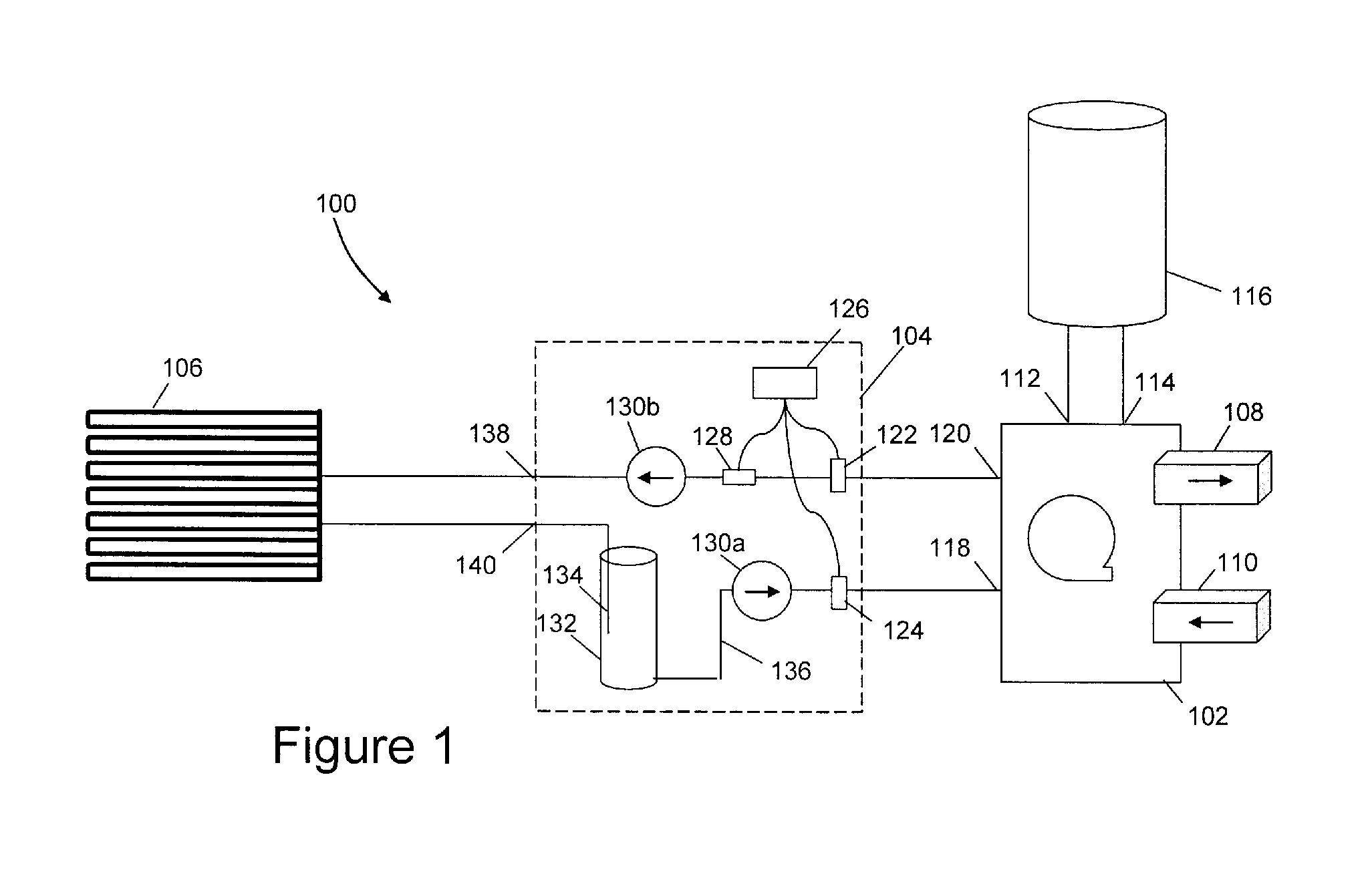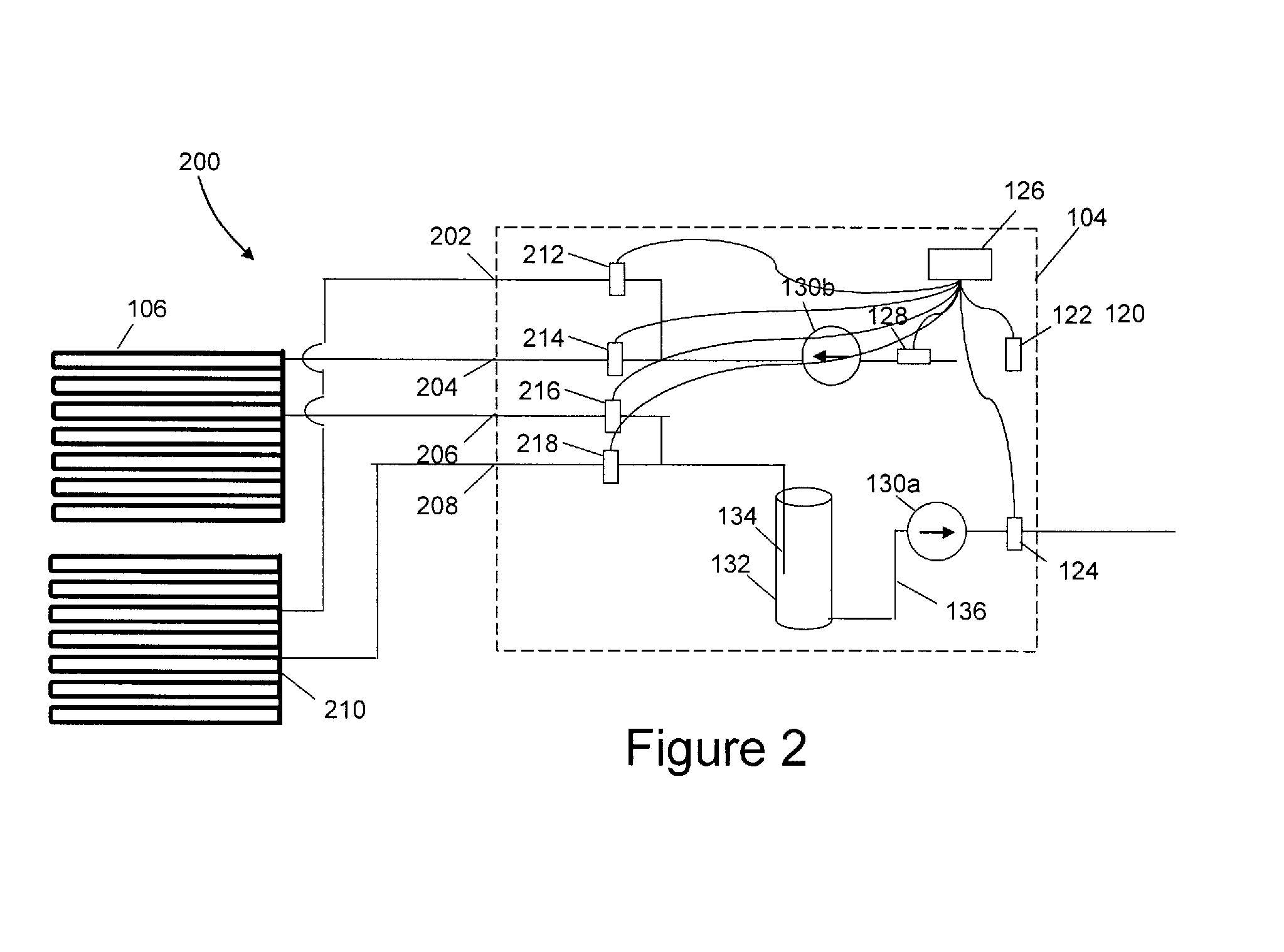Although generally acceptable performance is obtained in such moderate ambient temperature conditions, such systems leave a lot to be desired during extreme fluctuations in ambient temperatures, wherein substantial reductions in heating and cooling capabilities and in operating efficiencies are seen.
Unfortunately, a number of major complications may arise when
refrigerant is pumped through the subterranean tubes.
First,
lubricant oil which characteristically escapes from the compressor while the system is operating is carried along with the
refrigerant throughout the system and tends to accumulate in the tubes, substantially reducing the ability of the subterranean tubes to perform their originally intended function.
As a result, a certain amount of liquid
refrigerant then passing through the subterranean tubes would lose its
momentum and revert to liquid, leading to low pressure fault conditions.
A third problem, which was generally observed for prior art heat pumps, was the absence of a mechanism for achieving refrigerant pressure
equalization subsequent to system shutdown for reducing start-up loads.
Unfortunately, however, the same system generally would not properly function when operated in a
reverse mode due to the difference in
specific density of gaseous refrigerant relative to that of liquid refrigerant.
One reason ground source heat pumps have not been more widely used in the past is because of the expense involved in the design and installation of the circulating
fluid pipe loop which must be buried in the ground.
The cost for the installation of certain prior art vertical ground source heat loops can account for nearly half of the total cost incurred in the installation of a
geothermal heat pump system.
Such direct exchange loops, however, are not practical for complex installations because temperature gradients in various elements of the system can lead to vapor locks or condensation within the loop, as previously discussed.
Measuring only
heat output does not allow for accurate measurement of each energy input, such as
electricity from the local utility and
thermal energy from the ground loop and thus cannot be used to effectively allocate costs.
There was no flexibility for growth or change to the system over time nor dynamic adjustment of the pumping source to changing load patterns, leading to inefficiencies since no means are provided to vary the pumping rate depending on load.
These limitations reduce efficiency through improper pumping pressures and lead to a loss of accuracy, particularly over time as actual conditions drift from initial system weighting calculations.
Low accuracy prevents such systems from being reliably used in situations where accuracy is important, such as allocation of costs to individual loads, as may be found in multi-unit residential and commercial buildings.
Both of these requirements add significantly to system installation costs and impose additional costly requirements on each
thermal load serviced by the system.
Despite improvements, a further
disadvantage arising from prolonged usage of the earth-source heat-pump systems still remained: stressing of the earth's ability to transfer and / or store large quantities of thermal energy in the vicinity of the
heat exchanger for extended periods of time.
A similar situation could also be seen in climates imbalanced in their annual heating or cooling needs, such as northern climates requiring substantially more heating than cooling over the course of a year or southern climates requiring the opposite.
Unfortunately, such
integrated systems generally failed to realize optimum operational efficiencies.
Further, the integrated refrigerant and liquid subsystems produced a system with substantially increased complexity and maintenance requirements.
That system, however, did not employ the additional fan coil as an
alternative energy source.
Again, that system did not realize optimum operational efficiencies because it did not coordinate concurrent utilization of both energy sources.
Although the system could transfer heat between any two of the heat exchangers, the Blackshaw et al. system did not utilize the third
heat exchanger to augment the performance of the subterranean heat exchange loop and optimum efficiencies were not fully realized.
Although the system may boost efficiency in certain environmental conditions, it was still limited to an efficiency that essentially averaged the contribution of each source depending on existent ambient conditions.
Finally, Johnson and Tinkler in U.S. Pat. No. 6,694,766 showed a means of capturing
waste heat or excess
cooling capacity from an existing process but again did nothing to capture the benefit of additional heat source or sink gains that could be available through supplemental thermal systems.
 Login to View More
Login to View More  Login to View More
Login to View More 


